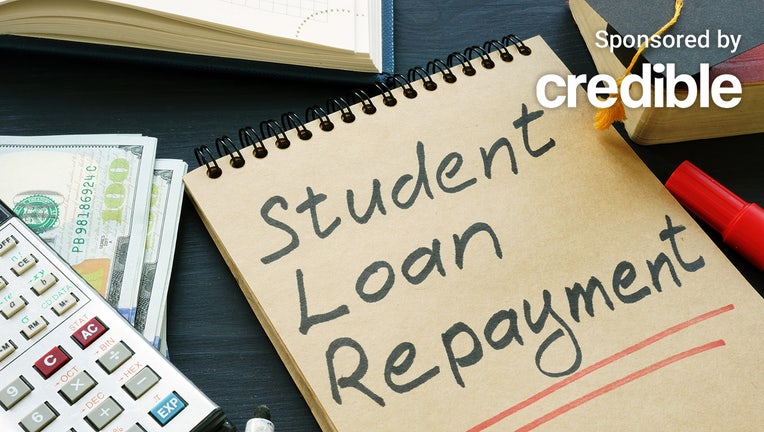Biden administration announces student loan income-driven repayment plan changes

President Joe Biden's recent student loan forgiveness announcement included proposed changes to the Public Service Loan Forgiveness (PSLF) program and income-driven repayment plans. (iStock)
When President Joe Biden announced his administration's widespread student loan forgiveness plan last week, he also announced new proposed changes to other loan forgiveness programs, including income-driven repayment plans.
The Department of Education's proposed rule would significantly reduce the monthly payment for many low- and middle-income borrowers. It would cut the cap for monthly student loan payments from 10% of discretionary incomes to just 5%. It would also increase the amount of income considered "non-discretionary," which is not counted toward repayment plan calculations.
The department’s proposed rule would forgive loan balances on income-driven repayment plans after 10 years of payments, rather than 20 years, for borrowers with an original loan balance of $12,000 or less. The rule would also cover all borrowers’ unpaid monthly interest as long as they make their payments, ensuring that their total balance does not increase from month to month.
The proposed regulations will be published in the coming days in the Federal Register and the public is invited to comment on the draft rule for 30 days.
If you have private student loans, these proposed changes will not apply to them. But you can potentially reduce your monthly payments by refinancing. Visit Credible to find your personalized interest rate without affecting your credit score.
BIDEN’S STUDENT LOAN FORGIVENESS PLAN — HERE’S EVERYTHING YOU NEED TO KNOW
Department of Education also proposes changes to PSLF
The Department of Education also proposed long-term changes to the Public Service Loan Forgiveness (PSLF) program, saying these adjustments would make it easier for those working in public service to receive forgiveness.
The department is proposing to allow more payments to qualify toward PSLF including partial, lump sum and late payments. It also wants to count some deferments and forbearances, such as those for Peace Corps and AmeriCorps service, National Guard duty and military service.
These proposed adjustments are separate from other temporary PSLF changes that the Biden administration announced last October.
Under the PSLF program, borrowers have had to commit to at least 10 years of public service work and make the 120 qualifying payments to their student loans over 10 years. Under the new rules, which were changed "for a limited time as a result of the COVID-19 national emergency," any prior payment made by a borrower eligible for the PSLF program would count as a qualifying payment. That's regardless of the loan type, repayment plan or whether the payment was made in full or on time. This temporary waiver is set to end on Oct. 31, 2022.
If you have private student loans that don’t qualify for forgiveness, you could consider refinancing to lower your monthly payments. Visit Credible to compare multiple mortgage lenders at once and choose the one with the best interest rate for you.
BIDEN CANCELS $3.9B IN STUDENT LOAN DEBT FOR ITT TECH, DEVRY, OTHER BORROWERS
Other changes to loan forgiveness plans
Biden’s announcement was just the latest in a series of changes for income-driven student loan repayment. Back in April, the Department of Education announced new steps it would take to give borrowers access to student loan forgiveness through income-driven repayment plans and PSLF.
The department had student loan servicers conduct a one-time account adjustment to count certain long-term forbearances, including 12-month use of single forbearance and 36-month use of discretionary forbearance, toward their total number of payments made. This came after the department found that many loan servicers had steered borrowers toward forbearance when an IDR repayment plan would have been more beneficial to them. This is because some IDR plans can instate payments as low as $0 per month.
The Consumer Financial Protection Bureau (CFPB) said in a recent webinar that by the end of 2022, new enrollment rules will go into effect and borrowers may see audits of forbearances, total IDR payments and account adjustments for revisions for Direct Loans and other federally-managed loans.
Federal Student Aid (FSA) estimated that these changes would result in immediate debt cancellation for at least 40,000 borrowers under PSLF. Several thousand more would also receive loan forgiveness through IDR and about 3.6 million borrowers would receive at least three years of additional credit toward their IDR forgiveness.
If you are interested in lowering your private student loan payments, you could potentially do so by refinancing at a lower interest rate. Contact Credible to speak to a student loan expert and see if this is the right option for you.
Have a finance-related question, but don't know who to ask? Email The Credible Money Expert at moneyexpert@credible.com and your question might be answered by Credible in our Money Expert column.

